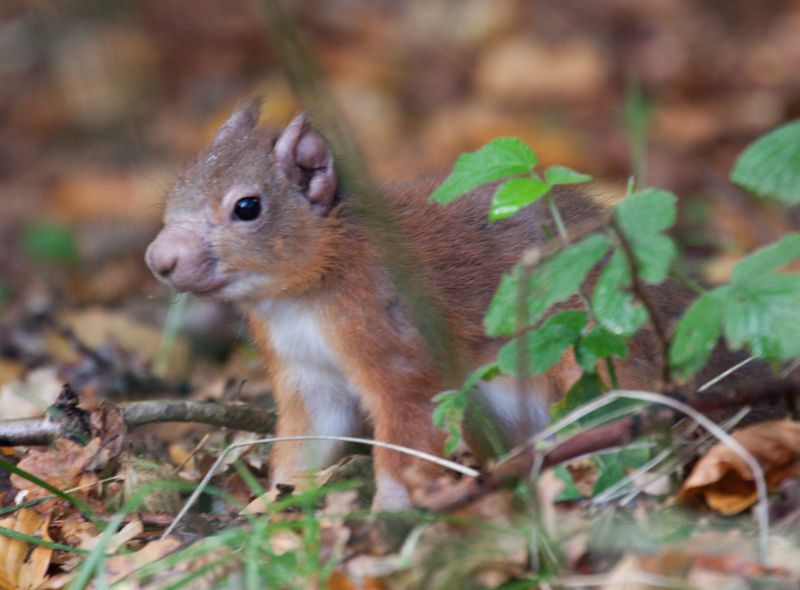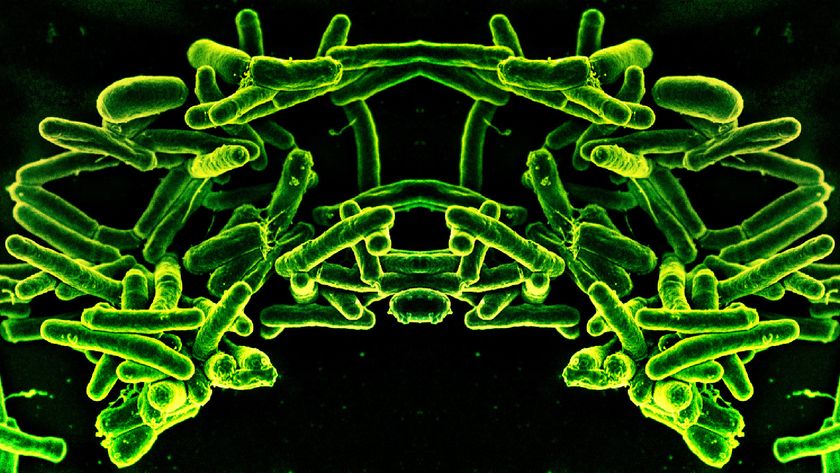Red Squirrels Harbor Leprosy-Causing Bacteria

Researchers were intrigued by an increasing number of sores on red squirrels in the United Kingdom and Ireland, so they decided to run tests on the animals to find out what was causing these mysterious marks.
After investigating, they now say they have found the cause: Some squirrels harbor the same bacteria that caused leprosy in humans in medieval Britain. The squirrels had skin lesions along with swelling of their snouts, ears, lips, eyelids and extremities — which are some of the symptoms also seen in people with the disease.
In the study, the researchers conducted genetic screening and blood tests on more than 100 red-squirrel cadavers from England, Ireland and Scotland. These red squirrels, of the species Sciurus vulgaris, arefound throughout Eurasia. [6 Strange Facts About Leprosy]
They found that all 25 red squirrels from England's Brownsea Island were infected with the bacterium Mycobacterium leprae, which is the oldest pathogen associated with leprosy and was responsible for outbreaks of the disease in medieval Europe, according to the findings, published today (Nov. 10) in the journal Science. No other squirrels in the study were found to harbor this type of bacteria, although a few tested positive for a related bacterium, Mycobacterium lepromatosis, which can also cause leprosy.
The results were particularly surprising, given that no humans have contracted leprosy in the British Isles for centuries, according to the researchers, led by Charlotte Avanzi, a doctoral assistant in molecular life sciences at the Swiss Federal Institute of Technology in Lausanne.
"The main message of this is that the number of non-human reservoirs of leprosy might be much higher than previously thought," Avanzi told Live Science. "This is of particular interest in countries where leprosy is still endemic in human[s], where maybe a part of the new cases number could be explained by the presence of an animal reservoir." [Story continues below]

The findings suggest that "a pathogen can persist in the environment long after its clearance from the human reservoir," the researchers wrote in their study. The bacteria were found in both squirrels that had visible symptoms of leprosy, which can include hair loss and swollen limbs, and those squirrels that had no symptoms.
Sign up for the Live Science daily newsletter now
Get the world’s most fascinating discoveries delivered straight to your inbox.
Today, leprosy is called by its modern name, Hansen's disease, and occurs mainly in developing countries, although there are cases elsewhere. Globally, there are about 220,000 cases yearly, according to the study. In the U.S., between 150 and 200 cases are typically reported each year, according to the National Hansen's Disease Program. A study published in May 2016 found that there were a total of 139 cases of leprosy in England and Wales between 2003 and 2012.
Symptoms include skin lesions and damage to the peripheral nerves, which can lead to a loss of sensation as well as certain visible deformities. [7 Devastating Infectious Diseases]
The bacteria that cause leprosy were once thought to be found only in humans, until researchers discovered in the past decade that nine-banded armadillos could harbor M. leprae. These armadillos are found in North, Central and South America, including parts of the southern U.S.
"The armadillos carry the [bacteria] in huge numbers and have no particular symptoms," said Kenrad Nelson, a professor of epidemiology at Johns Hopkins Bloomberg School of Public Health who was not involved with the new study. The armadillos do not get sick, "and there's no evidence it shortens their life," Nelson told Live Science. However, the animals can transmit the disease to people. Cases have been reported in Texas, Louisiana and other states, according to a 2011 study in The New England Journal of Medicine.
The researchers of the new study stressed, however, that the chances of people catching the disease from red squirrels is low.
Nelson said he agrees that the chances are low, primarily because contact between red squirrels and humans in the U.K. is limited. Although armadillos are often kept as pets, or even eaten, squirrels do not come into direct contact with humans as frequently, he noted.
The authors of the new study said they are not certain how the squirrels became infected with the leprosy-causing bacteria. They noted that it's possible that in the past, "humans may have been infected through contact with red squirrels bearing M. leprae, as these animals were prized for their fur and meat in former times." It's also possible that in medieval times, humans may have passed the disease on to squirrels, Nelson added.
Further research is needed into other potential animal carriers of the bacteria, as such animals may thwart efforts to eradicate leprosy in humans and serve as "reservoirs" of the bacteria, the researchers said.
Originally published on Live Science.














